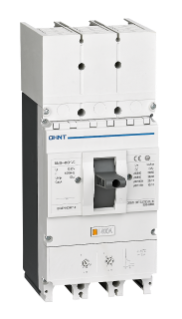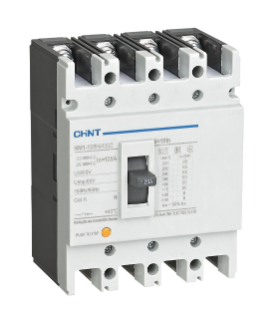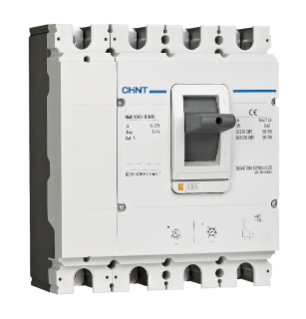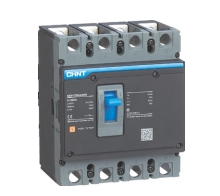Motor start-up current is the initial surge of electricity that flows when an electric motor begins operation. This current is much higher than the normal operating current (5-10 times greater). It’s a massive power surge and it can sometimes even trip circuit breakers or thermal relays. It happens within milliseconds of turning on the motor. Read on to learn why this current is so high and how it trips the electrical system.
The Key Components of Electric Motors
Electric motors have several essential parts that work together. Understanding these parts helps explain why motor start-up current is so high. The main components include:
Stator
The stator is essentially the motor’s foundation. Its coiled copper wires are wrapped around a steel core. They become electromagnets when powered up and create a magnetic field that drives rotation.
Rotor
The rotor is the rotating part of the motor. It contains conductive bars (in induction motors) or windings (in synchronous motors) that interact with the stator’s magnetic field. These interact with the stator’s magnetic field. This interaction creates the rotational force.
Commutator
The commutator serves as a rotary electrical switch. It reverses the current direction at the right moment. This switching action maintains rotation in a consistent direction. The commutator is a vital component in DC motors but it’s not used in all motor types.
Brushes
Brushes make electrical contact with the rotating commutator. They deliver current from the power source to the rotating parts. Brushes are usually made of carbon or graphite materials. They press against the commutator with spring pressure.
Bearings
Bearings support the rotating shaft and reduce friction. They allow smooth rotation while maintaining proper alignment. Bearings come in various types including ball, roller, and sleeve designs. They must withstand continuous operation and high speeds.
Why Motor Start-Up Current is High
There are specific reasons why the motor startup current spike occurs. The following aspects of the motor highlight the main causes:
It Requires a Large Current to Kick Start an AIM Motor
Motors need a large current surge to overcome inertia. When a motor starts, it must convert electrical energy to mechanical motion. This conversion requires significant power to begin rotation. The rotor and connected equipment have a mass that resists movement. Overcoming this resistance demands a high initial current flow.
Rotating Rotor Can Induce Current Increase in Motor
As the rotor begins spinning, it generates a counter-electromotive force (back EMF). At startup, this back EMF is zero. Without back EMF to limit current flow, the initial motor start-up current is very high. As speed increases, back EMF builds up. The motor current gradually decreases to normal operating levels as the motor reaches full speed.
How Motor Start-Up Current Trips the Electrical System
The high motor start-up current can disrupt electrical systems. Protection devices may interpret this surge as a fault condition. Two main issues can occur during motor startup:
Circuit Breaker False Tripping
Circuit breakers may mistake startup current for a short circuit. The breaker may not be able to distinguish between a normal startup surge/motor inrush current and a fault. This leads to unnecessary tripping and operational disruptions.
Thermal Relay Activation
The heat generated by the motor start-up current can trigger thermal relays. These relays protect against overheating from sustained overloads. During startup, the brief current surge creates heat. If not properly configured, thermal relays mistakenly interpret this as a dangerous condition and disconnect power to protect the system.
Properly setting tripping current and time delay is crucial. These settings must accommodate normal startup conditions and should only trigger during genuine fault situations. Coordination between protection devices prevents nuisance tripping.
The Significance of Three Elements Protection Scheme
A three elements protection scheme is generally adopted for motor circuits. This combines electromagnetic circuit breakers, contactors, and thermal relays. Each component serves a specific protective function. This approach provides comprehensive motor protection against various fault conditions.
At CHINT, our NM8N-HV MCCB is ideal for motor protection applications. It works perfectly in three-element protection schemes. The NM8N-HV offers current ranges from 63-630A with 20% accuracy. It offers reliable performance in demanding environments. Its top features include:
- Rated for high voltages up to 1150V AC for versatile installation options
- Zero-arcing circuit breaking capability reduces maintenance needs
- Wide operating temperature range from -40°C to +70°C for extreme environments
- Available in multiple frame sizes (250A, 400A, 630A) to match different motor capacities
- Complies with IEC/EN 60947-2 standards for guaranteed quality and safety
Conclusion
Motor start-up current presents unique challenges in electrical systems. Understanding why this current is high helps in selecting proper protection. The three-element protection scheme offers the best solution as it balances safety and operational reliability. At CHINT, we provide innovative products for motor protection applications. Our NM8N-HV MCCB series delivers superior performance in demanding environments.
If you have any questions or need further assistance, don't hesitate to reach out to us.












